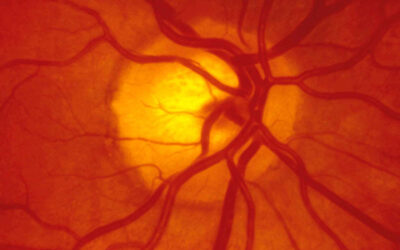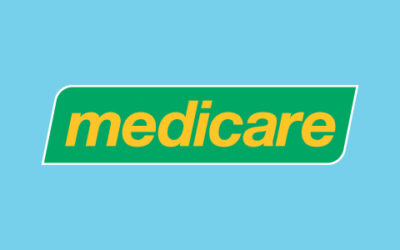Preventing Vision Loss: Five Top Tips
While common in older adults, deteriorating vision can affect a person at any age. As vision disturbances can significantly impact a person’s well-being and quality of life, it’s important to help care for our vision now to protect and support our eye health. Here are five top tips for supporting our eye health and preventing vision loss from our eye care professionals.
Prevent Over-Exposure To UV Rays
Exposing your eyes to large amounts of UV radiation over time from the sun’s natural rays can contribute to photokeratitis, also known as a type of sunburn of the eye. While at first, this can cause pain, red and gritty-feeling eyes, increasing tears and sensitivity to light, over time, this solar radiation can make you more likely to experience vision loss later in life by increasing your risk of developing cataracts, pterygium (known as surfer’s eye), macular degeneration, and even eye cancers. To prevent this, we recommend:
- Wearing specialised sunglass lenses that block out 100% of both UV-A and UV-B radiation and screen 75 to 90% of visible light
- Consider wearing wraparound frames for additional protection from the harmful sun rays, especially if you spend a lot of time outdoors in bright sunlight
- Wearing a wide-brimmed hat whenever you spend time outdoors, and do your best to seek shade
- Talking to your optometrist about contact lenses that can provide additional UV protection when renewing your prescription. Optometrists are there to ensure your contacts are the right fit for your lifestyle and level of sun exposure
- Awareness of indoor risks: Artificial UV light sources, including tanning beds, lasers and welding machines. As part of your annual comprehensive eye exam, be sure to mention your exposure to indoor risks as well as outdoor activities so that your optometrist can assess your level of UV exposure and provide you with the appropriate UV-absorbing lenses
Protect Your Eyes At Work
Workplace eye injuries such as scratches or burns to the cornea are very common, and unfortunately, these can often result in permanent damage to your eyes or even vision loss. The good news is that wearing appropriate eye protection can reduce the severity of an injury or prevent it from occurring in the first place.
Eye injuries most often occur in the workplace due to:
- Foreign objects: dust, chips, concrete, metal, wood and other flying particles, most often affecting those who work in construction, outdoors or in physical labour
- Chemicals: splashes and fumes
- Burns: hot steam or smoke
- Radiation: especially UV radiation, infrared radiation, and lasers
- Infectious diseases: such as hepatitis or HIV from blood and other body fluids, which can be transmitted through the mucous membranes of the eye, most often affecting healthcare or laboratory workers
To protect your eyes and prevent vision loss from eye-related injuries at work, we recommend:
- Removing or reducing hazards before starting work by using machine guards, work screens or other protective tools
- Wearing proper eye protection in the form of non-prescription or prescription safety glasses. Even though safety glasses may look like regular ones, they have features that can provide significantly more eye protection and are stronger than regular ones. Wraparound-style safety glasses or features like eye shields can provide even further side protection
- Keeping your safety eyewear in good condition and have it replaced if it becomes damaged, as even minor scratches or cracks can weaken its ability to protect your eyes in a harmful scenario
- Taking time to look out for eye safety dangers at your work
Take Steps To Reduce Screen-Related Eye Strain
People who use computers, screens, smartphones or televisions for extended periods have been found to have a much higher rate of blurred vision and other troublesome visual symptoms, such as eye strain, headaches and dry eyes.[1],[2] This has been linked to a reduced blinking rate when staring at a screen – as little as only 7 times per minute compared to the standard 22 times per minute.[3]
Blinking is the eye’s natural way of lubricating itself with tears and oils to keep it hydrated, healthy, and comfortable. When we blink less, our eyes’ protective film isn’t regularly replenished, leading to irritation, dry eyes, and discomfort. As well as this, viewing a computer or digital screen makes the eyes work harder, as letters on a device are not as precise or sharply defined, and glare and reflections on the screen can make viewing difficult.
To reduce the unwanted eye strain and other symptoms that can result from extended screen use, our eye care professionals recommend:
- Use the 20/20 rule when working on a computer – every 20 minutes, close your eyes for 20 seconds. If needed, try a post-it note on your computer screen reminding you to blink, or set a timer on your phone to step away from your computer to blink and give your eyes a rest.
- If you notice your eyes are particularly dry at the computer, trying to yawn may provide relief with a quick burst of tears because of the pressure that yawning can put on the lacrimal glands responsible for producing tears.
As well as this, consider the ergonomics of your environment when looking at a screen:
- Screen location: optimally, the computer screen should be 15 to 20 degrees below eye level so that you’re looking slightly downwards
- Lighting: position the screen to avoid glare from overhead lighting or windows, use blinds or drapes on windows, and fit any desk lamps with low-wattage bulbs
- Anti-glare screens: consider using a screen glare filter which can decrease the amount of light reflected from the screen.
- Minimise blue light exposure: blue light from LED and fluorescent lighting, as well as monitors, tablets and mobile devices, can negatively affect your vision over the long term. Optometrists can provide specialised lens tints and coatings to reduce this harmful impact and improve clarity and comfort.
Nourish Your Eyes From The Inside Out Through Diet And Nutrition
Researchers have linked eye-friendly nutrients, such as lutein and zeaxanthin, vitamin C, vitamin E and zinc, to improving vision and overall eye health and reducing the risk of certain serious eye diseases like age-related macular degeneration.[4] To help prevent vision loss and support eye health, try to incorporate critical vitamins and nutrients into your diet, such as [5]
- Lutein and zeaxanthin are the most potent antioxidants for the prevention of age-related macular degeneration, and they may help to reduce the risk of other chronic eye diseases. These are found in dark green leafy vegetables and other colourful fruits and vegetables such as broccoli, corn, peas, persimmons and tangerines.
- Vitamin C can also slow the progression of age-related macular degeneration and visual acuity loss. The highest sources include oranges, grapefruit, strawberries, papaya, green peppers and tomatoes.
- Vitamin E helps to protect the cells in our eyes from unstable molecules called free radicals, which break down healthy tissue. Excellent sources of Vitamin E include vegetable oils, nuts, wheat germ and sweet potatoes.
- Essential fatty acids such as Omega-3 are vital nutrients for visual health. Studies have suggested that getting enough omega-3 fatty acids is essential for optimal visual development and may even help to prevent retinal damage and degeneration.[6] Omega-3 fatty acids are naturally found in fish such as salmon, herring, sardines, squid, scallops and mussels, and plant-sourced omega-3s are found in walnuts, linseed/flaxseed, chia seeds and oils such as canola and soybean.
- Zinc is an essential mineral for maintaining the retina’s health and overall vision and eye health.[7] Impaired vision, such as poor night vision and cloudy cataracts, has been linked to zinc deficiency. For natural dietary sources of zinc, try red meat, oysters and other shellfish, nuts, and seeds.
- Drink 8 glasses of water a day to help blood circulation.
Detect Early Changes With A Comprehensive Annual Eye Exam
Even if you have no eye diseases or concerning symptoms, comprehensive eye examinations with an optometrist are recommended every two years here in Australia [8] and every year if you’re over 65.
A comprehensive eye exam with an optometrist every year is important to catch vision problems early so that effective treatment and preventative strategies can be put in place as soon as possible – even before you develop any symptoms to suggest that something may be wrong. An optometrist can view inside your eye through an eye exam to assess the retina, blood vessels and the optic nerve.
Conditions that cause vision loss, such as glaucoma, are usually painless, so people don’t typically realise they have it until their eyesight begins to deteriorate significantly. Unfortunately, with glaucoma, any vision you lose cannot be regained, so it’s essential to catch it early. Other eye conditions can also develop over time without pain and only subtle vision changes, but with an annual exam, these can be picked up and treated promptly.
What To Expect At Your Optometrist Appointment
In a comprehensive eye exam such as those provided at The Optical Co, your eye care professional uses a gentle approach combined with innovative medical technology, including Digital Retinal Photography and Optical Coherence Tomography scans, to go beyond simply assessing eyesight, with the power to help to identify more than 270 severe health conditions, including diabetes, brain tumours, high blood pressure, autoimmune diseases and even some kinds of cancer.
Your comprehensive exam may include:
- Going through your personal and family health history, detailing when your symptoms began, medications you’re taking, work and environmental factors, and more
- Visual acuity measurements using reading charts to assess precisely how each eye can see
- Tests of your eye health which may include depth perception, colour vision, peripheral (side) vision and how your pupils respond to light
- Assessments to measure which power of lens you require to correct near-sightedness, far-sightedness or astigmatism
- Eye focusing, eye teaming and eye movement activities to examine how well your eyes focus, move and work together
- Eye health examination using a range of technologies to detect underlying conditions
After your exam is completed, your optometrist will be able to discuss your diagnosis and treatment plan options with you to protect your eye health and prevent vision loss, to help give you the freedom to do the things you love.
At The Optical Co, our friendly optometrists offer targeted care for various conditions. No matter your eye concerns, every treatment plan is designed uniquely for your needs and preferences and to help optimise your quality of life.
Don’t delay treatment. Get your eyes checked today. Contact one of your local clinics to book your comprehensive eye exam with one of our experienced team members.
[1] https://pubmed.ncbi.nlm.nih.gov/18708259/
[2] https://pubmed.ncbi.nlm.nih.gov/21480937/
[3] https://pubmed.ncbi.nlm.nih.gov/8426634/
[4] https://www.ncbi.nlm.nih.gov/pmc/articles/PMC6523787/
[5] https://www.ncbi.nlm.nih.gov/pmc/articles/PMC6523787/
[6] https://www.ncbi.nlm.nih.gov/books/NBK11888/
[7] https://www.ncbi.nlm.nih.gov/pmc/articles/PMC3693724/
[8] https://www.visionaustralia.org/information/eye-health/eye-care




